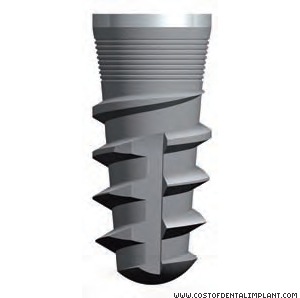One Stage Dental Implants
- Dec 14th. 2011
- By Dental Implants Cost
The evolution of dental implant related treatments in this era took its origin from the work of Branemark, who scientifically validated the entire process of placing an implant into bone, waiting a period of time for that bone to heal towards the implant, after which long-term functional loading adopted. Throughout the 70s and early 80s, a 1 stage threaded titanium plasma covered dental implant was adopted for overdenture retention with immediate loading. Also know as Swiss screw, the plasma coated dental implant was place into the anterior mandible and led to excellent long-term success. Other one stage implant systems were slow to emerge, but as they were proved with supporting data, the idea of a 1 stage endosseous dental implant therapy acquired credibility. The Strauman system has long-term data, showing that the one stage unloaded dental implant system can function in most regions of the mouth in distinction using the Swiss screw and also the Branemark methods.
Read more

